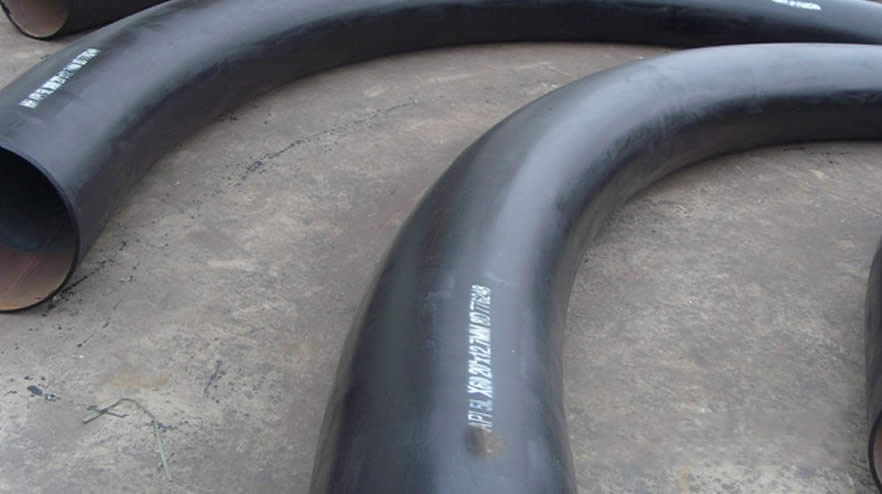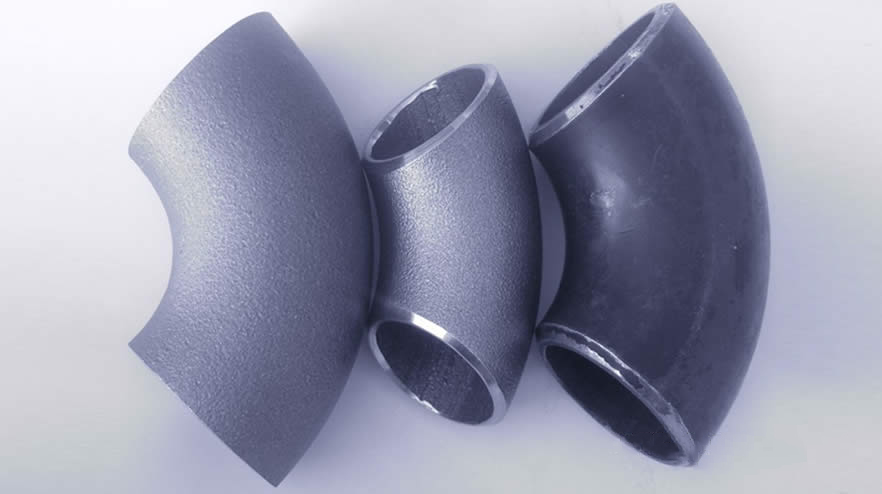Pipe elbows and pipe bends are both very common pipe fittings products which are used to change the flowing direction in a piping systems.Some times they are interchangeable,but not same.

” All bends are elbows but all elbows are not bends.”
Infact, the pipe is bent to form an elbow.
Elbows are pre-fabricated and are firm in design.
There are issues with bends since the tickness at the bend radius reduces as we bend the pipe.
A pipe bending is typically of the same material and typically a more gentle bend to prevent kinking.
We are passionate about pipe bending:
Pipe bend, Bend pipe, Pipe bending, ANSI, ISO, JIS and DIN Standards, Measures 1/2 to 56 Inches.
The bend is used to change the direction of run of pipe.it advantage is can matach long distance transition requirements,so it is commonly that bends dimension according to customer design. usually,the bends consist of 3D, 5D, 7D and 12D series.
Key Specifications/Special Features:
End bevel: according to the bevel of welding pipe fittings construction all the size can product according to the clients' requiry.

Standard:
ASME B16.9
ASME B16.28
ANSI/ASME B16.25
MSS SP-97
Pressure: SCH5 to SCH160
Bending radius(R): R=3D, 5D, 7D and 12D
Bending angle (θ):15°, 30°, 45°, 60°, 90°, 135°, 180°
Outer diamete(D): D≤1800mm
Wall thickness(T): T≤120mm
Straight Length (L): The length between two ends general from 300mm-1500mm
Materials
Carbon steel: ASTM/ASME A234 WPB-WPC
Alloy steel: ASTM/ASME A234 WP 1-WP 12-WP 11-WP 22-WP 5-WP 91-WP 911
Stainless steel: ASTM/ASME A403 WP 304-304L-304H-304LN-304N
ASTM/ASME A403 WP 316-316L-316H-316LN-316N-316Ti
ASTM/ASME A403 WP 321-321H ASTM/ASME A403 WP 347-347H
Low temperature steel: ASTM/ASME A402 WPL 3-WPL 6
High performance steel: ASTM/ASME A860 WPHY 42-46-52-60-65-70
Industrial Processes
Bending, squeezing, pressing, forging, machining and more
Bends typically have a minimum bending radius of 1.5 times pipe radius (R). If this bending radius is less than 1.5R, it is called Elbow. Reference to any international / industry standard need to be traced. 1.5, 3 and 4.5 R are the most common bending radii in industry.
A bend typically flows smoother since there are not irregular surfaces on the inside of the pipe, nor does the fluid have to change direction abruptly.
The most basic difference of them is the elbow relatively short than bend, R = 1D to 2 D is elbow More than 2D is bend. In the production process, cold bends can use Bending Machine to bend by ready-made straight bend. One-time completed also don’t need second corrosion. But elbow need manufacturers make to order, to do anti-corrosion, order cycle is long. Elbow price is higher than bend. But cost performance is much higher than bend. It is well-known that bend do not have anticorrosive processing is easy damaged, but the price is cheap so are used very much in some demand which not very high engineering.
In the west-east gas transmission of course, cold bends cost is low. elbow need manufacturers make to order, needs corrosion, order cycle is long,but cold bends can use ready-made straight bend by Bending Machine to bend. One-time completed also don’t need second corrosion. The cold bend construction technology need follow oil standard .west-east gas transmission have the enterprise standard,but we can use either elbow nor bend in open area. Sunny Steel Enterprise warn broad customers betweenness elbow and bend performance price is differ ,please carefully choose after consider it.
Industrial Processes
Bending, squeezing, pressing, forging, machining and more
Industries Served
Our pipe elbows are widely used in many industries, such as power generation, petroleum, natural gas, chemicals, shipbuilding, heating, papermaking, metallurgy and so on.
The pipe bends should be as per the standard of ANSI/ASME B16.49 which did not specific the bending radius and angle,the regular pipe bend radius are 2.5D,3D,5D,7D or 8D,but it can be any other bending radius according to the design need,and bending angle can be in any degree,5,10,15,90 degree or any other.People said “All bends are elbows but all elbows are not bend”,it is not true.Actually “All elbows are pipe bends but not all bends are elbows” is more reasonable.

A pipe elbow is also typically a sharp 90 degrees and often is a separate piece.
An elbow is a pipe fitting installed between two lengths of pipe or tubing to allow a change of direction, usually a 180° or 90° angle, though 45° elbows are also made. The ends may be machined for butt welding (SW) or socketed welding(SW) etc.
Most elbows are available in short radius or long radius variants. When the two ends differ in size, the fitting is called a reducing elbow or reducer elbow.
Elbows are categorized based on various design features as below:
Long Radius (LR) Elbow is also called LR elbow – means the radius is 1.5 times the pipe diameter
L/R 45°Elbow: Long radius 45 degree elbow changes the direction by 45 degrees.
L/R 90°Elbow: Long radius 90 degree elbow changes the direction by 90 degrees.
L/R 180°Elbow: Long Radius 180 degree return bend allows complete reversal of flow.
Short Radius (SR) Elbow is also called SR elbow, – means the radius is 1.0 times the pipe diameter
Short radiu 45°Elbow: Short radius 45° elbow changes the direction by 45 degrees.
Short radius 90°Elbow: Short Radius 90° elbow is same as LR90 except for the measurement between end of elbow to center line is 1 x NPS.
Short radius 180° Elbow: Short Radius 180° return bend allows complete reversal of flow









Tel:
E-mai:
Skype: